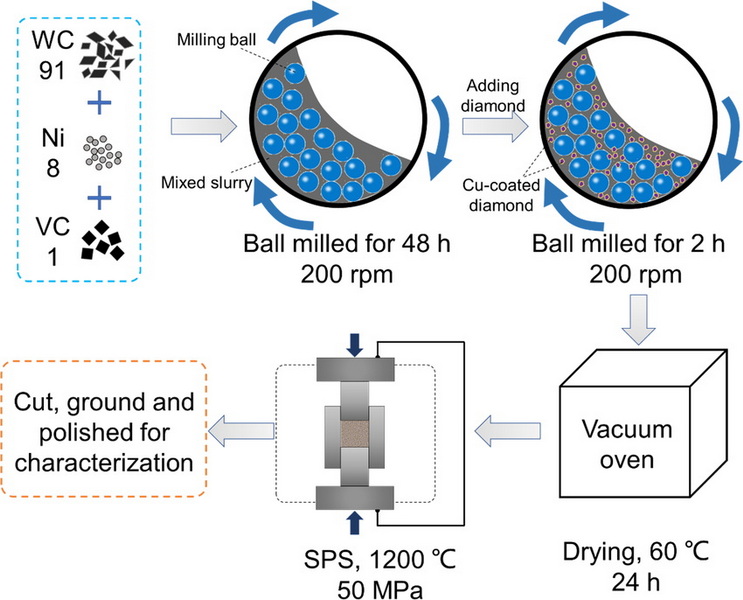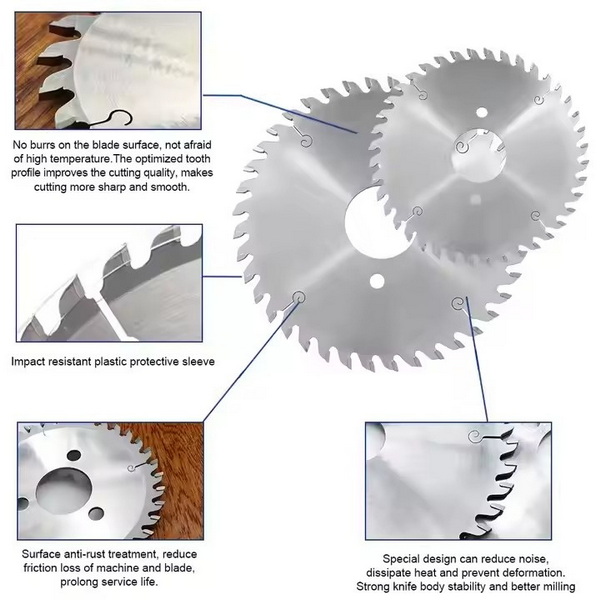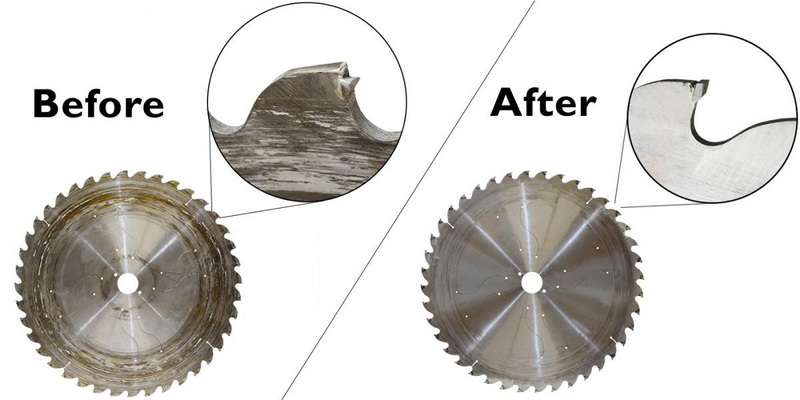Content Menu
● Introduction
● What is Tungsten Carbide?
>> Properties of Tungsten Carbide
● The Powder Coating Process
>> 1. Understanding Powder Coating
>> 2. Thermal Spray Techniques
>>> Advantages of Thermal Spray Techniques
>> 3. Coating Composition
>>> Importance of Binder Materials
● Applications of Tungsten Carbide Coatings
>> Emerging Applications
● Benefits of Powder Coating Tungsten Carbide
>> 1. Enhanced Durability
>> 2. Corrosion Resistance
>> 3. Reduced Friction
>> 4. Versatility
>> 5. Improved Aesthetics
● Considerations When Using Tungsten Carbide Coatings
>> 1. Cost Factors
>> 2. Surface Preparation
>> 3. Application Environment
>>> Temperature Considerations
>> 4. Thickness Control
● Future Trends in Tungsten Carbide Coatings
>> 1. Nanotechnology Integration
>> 2. Eco-Friendly Alternatives
>> 3. Advanced Application Techniques
● Conclusion
● FAQ
>> 1. Can all surfaces be coated with tungsten carbide?
>> 2. How thick can tungsten carbide coatings be applied?
>> 3. What industries benefit most from tungsten carbide coatings?
>> 4. Is there any maintenance required after applying tungsten carbide coatings?
>> 5. How does temperature affect tungsten carbide coatings?
● Citations:
Introduction
Tungsten carbide is a remarkable material known for its exceptional hardness and durability, making it a popular choice in various industrial applications. The ability to apply tungsten carbide as a powder coating enhances its versatility, allowing it to be used in environments where wear and tear are significant concerns. This article explores the process of powder coating tungsten carbide, its applications, benefits, and considerations.

What is Tungsten Carbide?
Tungsten carbide (WC) is a chemical compound composed of equal parts tungsten and carbon atoms. It is renowned for its hardness, which is nearly twice that of steel, making it an ideal material for cutting tools, industrial machinery, and protective coatings. When in powder form, tungsten carbide appears gray and can be mixed with various binders to enhance its properties for specific applications.
Properties of Tungsten Carbide
Tungsten carbide exhibits several key properties that contribute to its widespread use:
- Hardness: With a hardness rating of 9 on the Mohs scale, tungsten carbide is extremely resistant to scratching and wear.
- High Density: Its high density contributes to its durability and ability to withstand high-impact forces.
- Thermal Conductivity: Tungsten carbide has excellent thermal conductivity, allowing it to dissipate heat effectively.
- Chemical Resistance: It resists corrosion from various chemicals, making it suitable for harsh environments.
The Powder Coating Process
1. Understanding Powder Coating
Powder coating involves applying a dry powder to a surface, which is then cured under heat to form a hard finish. This technique is widely used for metal surfaces but can also be adapted for tungsten carbide applications. The powder coating process typically includes the following steps:
- Preparation: The surface must be cleaned and prepped to ensure proper adhesion.
- Application: The powder is applied using electrostatic spray or fluidized bed techniques.
- Curing: The coated item is heated in an oven to cure the powder into a solid finish.
2. Thermal Spray Techniques
The most common methods for applying tungsten carbide coatings include:
- High-Velocity Oxygen Fuel (HVOF): This process involves combusting fuel gas and oxygen in a high-pressure chamber to create a hot gas stream that accelerates tungsten carbide powder particles onto the substrate at supersonic speeds. The resulting coatings exhibit high density and excellent adhesion properties.
- Detonation Gun (D-Gun): In this method, acetylene gas ignites to propel tungsten carbide powder onto the surface. This technique allows for precise control over the coating thickness and properties.
Advantages of Thermal Spray Techniques
Thermal spray techniques provide several advantages over traditional coating methods:
- High Bond Strength: The impact velocity of the particles during application leads to strong mechanical bonding with the substrate.
- Minimal Heat Affected Zone: These methods generate less heat than traditional welding or brazing processes, reducing the risk of thermal distortion.
- Versatility: Various materials can be coated using thermal spray techniques, expanding their application range.
3. Coating Composition
Tungsten carbide coatings often include binder materials such as cobalt or nickel to improve adhesion and toughness. The composition can be tailored by adjusting the particle size and volume fraction of tungsten carbide relative to the binder.
Importance of Binder Materials
Binders play a crucial role in determining the final properties of the coating:
- Adhesion: Binders enhance the adhesion between the coating and substrate.
- Toughness: They provide toughness to the coating, preventing cracking under stress.
- Corrosion Resistance: Certain binders can improve the overall corrosion resistance of the coating.

Applications of Tungsten Carbide Coatings
Tungsten carbide coatings are utilized across various industries due to their outstanding wear resistance and durability. Common applications include:
- Aerospace: Used on turbine components and landing gear to withstand extreme conditions. The coatings help reduce friction and wear during operation, leading to increased efficiency and safety.
- Oil and Gas: Applied to drilling equipment to enhance longevity in harsh environments. Coatings protect against abrasive materials encountered during drilling operations.
- Manufacturing: Utilized on cutting tools and machinery parts to reduce wear and maintenance costs. Tungsten carbide-coated tools maintain sharpness longer than uncoated alternatives.
- Automotive: Employed in engine components for improved performance and durability. Coatings can reduce friction between moving parts, enhancing fuel efficiency.
Emerging Applications
In recent years, new applications for tungsten carbide coatings have emerged:
- Medical Devices: Tungsten carbide coatings are being explored for use in surgical instruments due to their biocompatibility and wear resistance.
- Robotics: As robotics technology advances, tungsten carbide coatings are being used in robotic arms and components that require high precision and durability.
Benefits of Powder Coating Tungsten Carbide
1. Enhanced Durability
The primary advantage of tungsten carbide coatings is their exceptional hardness, which provides superior wear resistance compared to uncoated materials. This durability translates into longer service life for components subjected to abrasive conditions.
2. Corrosion Resistance
Tungsten carbide coatings offer excellent resistance to corrosion, making them suitable for applications exposed to harsh chemicals or environmental conditions. This property is particularly beneficial in industries such as oil and gas, where equipment is often exposed to corrosive substances.
3. Reduced Friction
These coatings minimize friction between moving parts, leading to improved efficiency and reduced energy consumption in machinery. Lower friction also results in less heat generation during operation, further extending component life.
4. Versatility
The ability to customize the coating's composition allows it to be tailored for specific applications, enhancing its effectiveness across various industries. For example, different binder materials can be selected based on environmental conditions or mechanical requirements.
5. Improved Aesthetics
In addition to functional benefits, powder-coated tungsten carbide surfaces can also be aesthetically pleasing. Various colors and finishes are available that can enhance product appearance while maintaining performance characteristics.
Considerations When Using Tungsten Carbide Coatings
1. Cost Factors
While tungsten carbide coatings provide significant benefits, they can be more expensive than other coating options. It's essential to weigh the long-term savings from reduced maintenance against initial costs. Companies should conduct a cost-benefit analysis when considering these coatings.
2. Surface Preparation
Proper surface preparation is critical for achieving optimal adhesion of the coating. This may involve cleaning, blasting, or other methods to ensure the substrate is free from contaminants. Inadequate preparation can lead to poor adhesion and premature failure of the coating.
3. Application Environment
Consideration must be given to the operating environment of the coated component. Factors such as temperature extremes, chemical exposure, and mechanical stress can influence the performance of the coating.
Temperature Considerations
Different binder materials may perform better at varying temperatures; therefore, understanding the operating conditions is crucial when selecting a coating composition.
4. Thickness Control
Achieving uniform thickness during application is vital for ensuring consistent performance across coated surfaces. Variations in thickness can lead to uneven wear patterns or localized failure under stress.
Future Trends in Tungsten Carbide Coatings
As technology continues to advance, several trends are emerging in the field of tungsten carbide coatings:
1. Nanotechnology Integration
The integration of nanotechnology into tungsten carbide coatings may lead to enhanced properties such as improved adhesion strength or even greater wear resistance due to smaller particle sizes.
2. Eco-Friendly Alternatives
Research into environmentally friendly binders and processes is gaining traction as industries seek sustainable solutions without sacrificing performance.
3. Advanced Application Techniques
Innovative application methods such as laser cladding may become more prevalent as they offer precise control over thickness and composition while minimizing thermal distortion risks associated with traditional methods.
Conclusion
Powder coating with tungsten carbide presents an effective solution for enhancing the durability and performance of components across various industries. With its exceptional hardness and wear resistance, tungsten carbide coatings significantly extend the lifespan of critical parts while reducing maintenance costs. As technology advances, the methods of applying these coatings continue to evolve, offering even greater customization and efficiency.
The future looks promising for tungsten carbide coatings as industries continue seeking advanced materials that meet their demanding operational requirements while promoting sustainability practices.

FAQ
1. Can all surfaces be coated with tungsten carbide?
Yes, most metal surfaces can be coated with tungsten carbide using appropriate surface preparation techniques.
2. How thick can tungsten carbide coatings be applied?
Coatings can vary in thickness depending on the application but typically range from 0.5 mm to several millimeters.
3. What industries benefit most from tungsten carbide coatings?
Industries such as aerospace, oil and gas, manufacturing, automotive, and mining benefit significantly from these coatings due to their durability.
4. Is there any maintenance required after applying tungsten carbide coatings?
Generally, minimal maintenance is needed; however, regular inspections can help identify any potential issues early on.
5. How does temperature affect tungsten carbide coatings?
Tungsten carbide coatings maintain their hardness at high temperatures but may require specific binders or compositions for extreme thermal conditions.
Citations:
[1] https://www.linde-amt.com/resource-library/articles/tungsten-carbide-powder
[2] https://westernmachine.com/machine-shop-services/tungsten-carbide-coatings/
[3] https://www.pcimag.com/articles/113102-new-tungsten-carbide-powders-for-hvof-applications
[4] https://nic.nimte.ac.cn/uploadfiles/site5/202204/20220420164551-5516221183.pdf
[5] https://www.asbindustries.com/coating-materials/carbide-coating-materials/tungsten-carbide-coatings
[6] https://shop.machinemfg.com/tungsten-carbide-coating-comprehensive-guide/
[7] https://www.oerlikon.com/ecoma/files/DSM-0398.1_WC10Ni5Cr_AggSint.pdf?download=true
[8] https://caod.oriprobe.com/issues/1515318/toc.htm
[9] https://www.thermalspray.com/need-tungsten-carbide-coatings/
[10] https://www.sandblast.in/product/tungsten-carbide-coating
[11] https://patents.google.com/patent/US3850614A/en
[12] https://www.thermalspray.com/preparation-tips-for-tungsten-carbide-coatings/
















